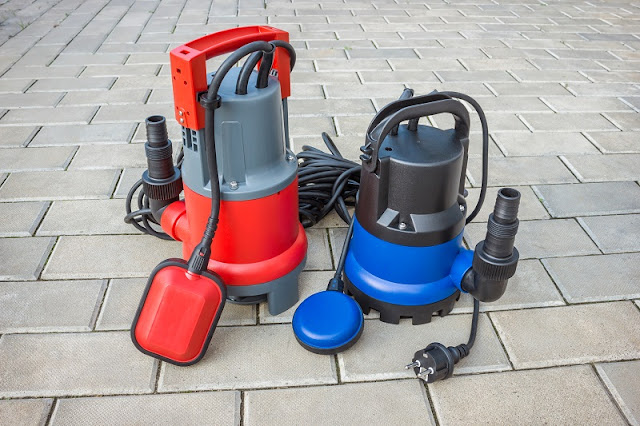Introduction
Water pumps are integral to various processes, including water supply, irrigation, sewage treatment, and many others. Among the different types of water pumps, submersible water pumps stand out due to their efficiency, ease of use, and minimal maintenance requirements. In this article, we will explore how a submersible water pump works, its unique features, and its versatile applications. So let's dive in and learn about the mechanics of this essential device!
1. What is a Submersible Water Pump?
A submersible water pump is a type of water pump that operates when fully submerged underwater. Designed with specific features to protect its integrity under water, a submersible water pump can pump water to the surface effectively and efficiently. Its unique design and working mechanism differentiate it from other types of water pumps, making it the ideal choice for various applications, including deep wells, boreholes, and sewage systems.
2. Components and Construction of a Submersible Water Pump
There are four main components of a submersible water pump: the waterproof seal, motor, centrifugal impeller, and cable. Let's dive into each part and their respective functions.
- Waterproof Seal
The waterproof seal is one of the most critical components of a submersible water pump. It ensures that water doesn't enter the motor, preventing damage and short circuits. Typically, the seal is made from high-quality materials such as rubber, stainless steel or ceramic. The durability of the seal is crucial, especially when the pump is operating under high pressure.
- Motor
The motor is the heart of a submersible water pump. It's responsible for converting electrical energy into mechanical energy, which drives the centrifugal impeller. Generally, submersible water pump motors use a hermetically sealed chamber, filled with oil or other suitable liquid to cool the motor and provide lubrication for the bearings.
- Centrifugal Impeller
The centrifugal impeller is the primary component responsible for pumping water. It features a series of curved vanes or blades that create a spinning motion, which generates centrifugal force. This force propels water outward from the impeller through the discharge pipe, effectively pumping it to the surface.
- Cable
The cable supplies electrical power to the submersible water pump's motor. It's designed specifically for underwater use, ensuring that it can transmit power efficiently without short-circuiting or affecting the performance of the pump. It's crucial to select a high-quality cable that can withstand the submersion depth and water conditions that the pump will operate under.
 |
| Submersible Water Pump |
3. How a Submersible Water Pump Works: The Process Explained
When a submersible water pump is submerged in water and powered, the motor drives the centrifugal impeller, which spins at a high speed. The spinning motion of the impeller creates a centrifugal force, drawing water into the intake of the pump. As the water passes through the impeller, it's propelled outward and continues to flow through the discharge pipe, eventually reaching the surface.
The unique design of the submersible water pump ensures minimal energy loss during the pumping process, maximizing pump efficiency. In addition, its fully submerged operation allows the pump to take advantage of the surrounding water for cooling, negating the need for an external cooling system.
4. Advantages of Submersible Water Pumps
Submersible water pumps offer numerous benefits over other types of water pumps, including:
- High efficiency: Due to their design and underwater operation, submersible water pumps minimize energy loss while maximizing water flow.
- Noise reduction: As the pump is submerged in water, noise is significantly reduced compared to above-ground pumps.
- No priming necessary: Because they're designed to operate underwater, submersible water pumps don't require priming before use, saving time and effort.
- Low maintenance: The robust construction and sealed motor of submersible water pumps result in minimal maintenance requirements.
- Versatility: Submersible water pumps are suitable for various applications, from deep wells and boreholes to sewage systems and water features.
5. Applications of Submersible Water Pumps
Submersible water pumps are versatile devices with numerous applications, including:
- Deep well water extraction: Submersible water pumps are the ideal solution for deep well water extraction, as they can pump water from depths not reachable by other types of water pumps.
- Borehole and groundwater extraction: The compact design and high efficiency of submersible water pumps make them perfect for borehole and groundwater extraction.
- Sewage pumping: Submersible water pumps can handle dirty water and solid particles, making them suitable for sewage pumping applications.
- Flood control and dewatering: Submersible water pumps can be used for dewatering flooded areas, removing water effectively and efficiently.
- Irrigation: Submersible water pumps can provide the required water pressure and flow for irrigation systems.
- Water features and fountains: Submersible water pumps help create water features and fountains by circulating and filtering water.
6. Maintenance and Troubleshooting of Submersible Water Pumps
While submersible water pumps are designed for minimal maintenance, it's essential to monitor their performance, as well as clean and inspect them regularly. Proper maintenance will ensure optimal efficiency and prolong the pump's lifespan.
Some common troubleshooting techniques for submersible water pumps include checking the electrical connections, inspecting the waterproof seal for damage, and ensuring the intake and discharge pipes are clear of debris. If the pump is not performing as expected, consult the manufacturer's guidelines or consult a professional for assistance.
Conclusion
In summary, submersible water pumps are efficient, versatile, and durable devices used to pump water from deep wells, boreholes, sewage systems, and other applications. Understanding how a submersible water pump works, as well as its unique features and applications, will help you select the perfect pump for your specific needs. With proper maintenance and care, a submersible water pump can provide years of reliable, hassle-free service.
Comments
Post a Comment